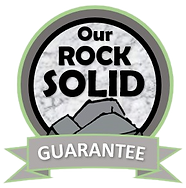
Chimney Services
Confirm our seasoned and professional team's art of craftsmanship and functionality with our expert exterior stone chimney services, design, repairing and construction, where quality, durability and proper function meet an aesthetic appeal. Let us transform your space with our top chimney masonry works that stand the test of time.





Stone Chimneys
Embellish your property with our exquisite stone fences, showcasing native designs that harmoniously integrate with your surroundings. Our services ensure professional finishes and a diverse selection of stone options, allowing you to a distinctive durable boundary for your outdoor space.
With a Beautyful stone fence you get several benefits, such as security, privacy, aesthetics, and curve appeal. Stone characteristics are durability, weather resistance, color, texture, size, and relative cost.
Different types of Stone Fences
-
Rock Fence:
This is another term for a dry stone wall, emphasizing the use of stones as a barrier.
-
Stone and Rider Fence:
This refers to a specific type of dry stone wall that includes vertical and horizontal rails, often used for agricultural purpose

Describe your image

Describe your image


Describe your image
Timeless elegance to your home








Chimney Cooper Flashing
Our chimney copper flashing services specialize in the professional installation, repair, or replacement of copper flashing around your chimney, effectively preventing leaks and safeguarding your home from water damage. Known for its exceptional durability and longevity, copper flashing is a reliable choice that can protect your chimney for.
-
Installation:
This involves creating a watertight seal where the chimney meets the roof using custom-cut copper flashing pieces. The process often includes base flashing, step flashing, and counter-flashing, all meticulously installed to direct water away from the vulnerable joint.
-
Repair:
When flashing is damaged, it can be repaired by patching or replacing sections, or by
reinforcing existing flashing with new material.

Describe your image

Describe your image


Describe your image
-
Replacement:
If the flashing is severely damaged, a full replacement may be necessary. This involves removing the old flashing, preparing the
chimney, and installing new copper flashing, often with custom fabrication to ensure a perfect fit.

Key aspects of stone chimneys:
Construction
-
Foundation: Due to the immense weight of natural stone, a reinforced concrete foundation must be poured below the frost line to prevent shifting during freeze-thaw cycles.
-
Expert masonry: The building process is a complex craft requiring skilled masons to lay individual stones and mix high-quality mortar. A well-built chimney is a work of art that can last a lifetime, but improper installation can lead to instability.
-
Lining and components: A flue liner, typically made of clay tiles or stainless steel, is installed within the stone shell to safely vent gases. A chimney crown is also built at the top to direct water away from the masonry.
Materials
-
Stone types: Many types of stone are used, each offering a distinct aesthetic and durability. Examples include:
-
Limestone
-
Granite
-
Slate
-
Quartzite
-
River rock
-
Natural vs. cultured stone: For the facing, a builder can use natural stone veneers or a more budget-friendly, manufactured "cultured" stone.
-
Mortar: High-heat, refractory mortar is used for the inner parts of the chimney, while specific types of cement-lime mortar are recommended for the exterior, depending on environmental factors.
Maintenance
-
Annual inspection and cleaning: According to the National Fire Protection Association (NFPA), chimneys should be inspected at least once a year by a certified chimney sweep. This prevents dangerous creosote buildup and identifies potential problems.
-
Addressing water penetration: Water can cause significant damage to masonry. Regular checks of the chimney cap and flashing are needed to prevent leaks, and a waterproof sealant can be applied every 10 to 15 years to the exterior masonry.
-
Masonry repairs: Cracks or crumbling mortar joints should be repaired promptly to maintain the chimney's structural integrity and prevent further damage.




